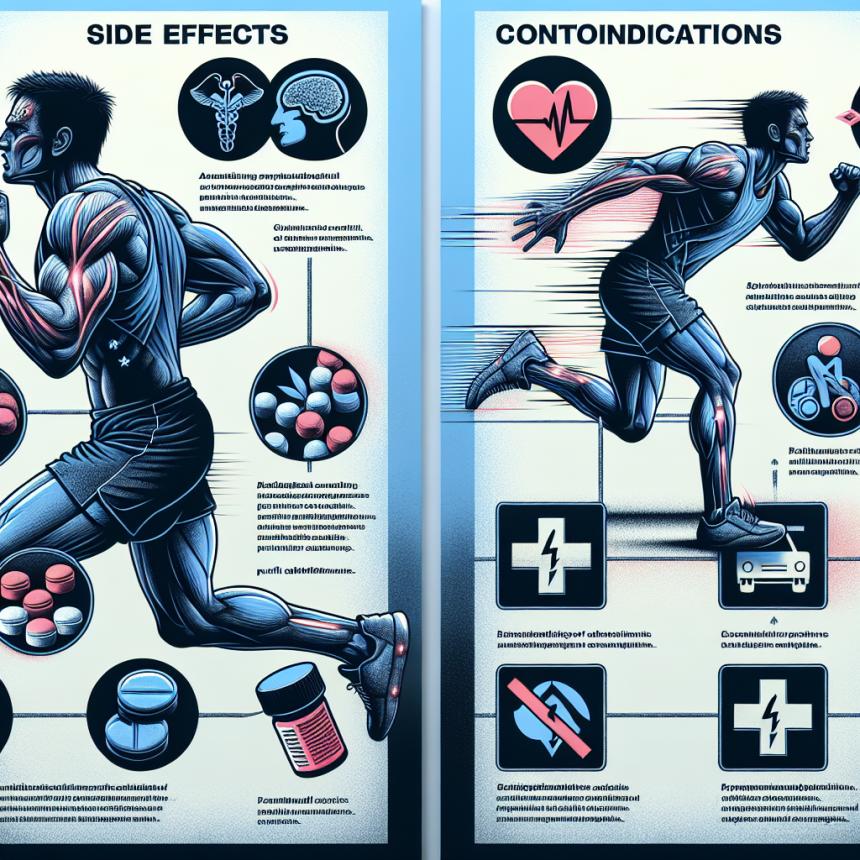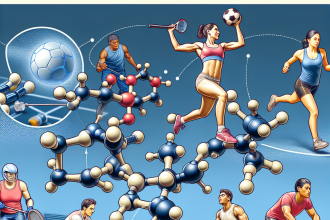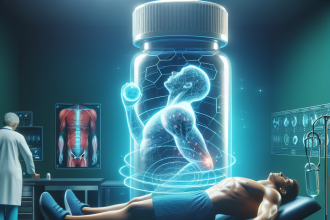-
Table of Contents
- Parabolan: Side Effects and Contraindications in Sports
- Side Effects of Parabolan
- Androgenic Side Effects
- Estrogenic Side Effects
- Cardiovascular Side Effects
- Hepatotoxicity
- Contraindications of Parabolan
- Medical Conditions
- Age
- Pregnancy and Breastfeeding
- Drug Interactions
- Expert Opinion
- Conclusion
- References
Parabolan: Side Effects and Contraindications in Sports
Parabolan, also known as trenbolone hexahydrobenzylcarbonate, is a powerful anabolic steroid that has gained popularity among athletes and bodybuilders for its ability to increase muscle mass and strength. However, like any other performance-enhancing drug, it comes with potential side effects and contraindications that must be carefully considered before use. In this article, we will explore the potential side effects and contraindications of Parabolan in the context of sports performance.
Side Effects of Parabolan
Parabolan is a synthetic derivative of testosterone, and like other anabolic steroids, it can cause a range of side effects. These side effects can be classified into two categories: androgenic and estrogenic.
Androgenic Side Effects
Androgenic side effects are those that are related to the male sex hormones, such as testosterone. These include acne, oily skin, increased body hair growth, and male pattern baldness. These side effects are more likely to occur in individuals who are genetically predisposed to them, and they can be managed with proper skincare and hair care routines.
One of the most concerning androgenic side effects of Parabolan is its potential to cause virilization in women. Virilization refers to the development of male characteristics in females, such as deepening of the voice, enlargement of the clitoris, and increased body hair growth. This is a serious side effect that can be irreversible, and therefore, Parabolan is not recommended for use in women.
Estrogenic Side Effects
Estrogenic side effects are those that are related to the female sex hormone, estrogen. Parabolan does not directly convert to estrogen, but it can cause an increase in estrogen levels by binding to the estrogen receptor. This can lead to side effects such as water retention, gynecomastia (enlargement of breast tissue in men), and an increase in blood pressure.
To prevent estrogenic side effects, it is recommended to use an aromatase inhibitor, such as anastrozole, alongside Parabolan. This will help to control estrogen levels and minimize the risk of developing these side effects.
Cardiovascular Side Effects
Parabolan has been shown to have a negative impact on cardiovascular health. It can increase LDL (bad) cholesterol levels and decrease HDL (good) cholesterol levels, which can lead to an increased risk of heart disease. It can also cause an increase in blood pressure, which can further increase the risk of cardiovascular problems.
It is important for individuals using Parabolan to monitor their cholesterol levels and blood pressure regularly and make necessary lifestyle changes to maintain a healthy cardiovascular system.
Hepatotoxicity
Parabolan is not known to be hepatotoxic, meaning it does not cause damage to the liver. However, it is always recommended to use liver support supplements, such as milk thistle, when using any oral or injectable steroid to minimize the strain on the liver.
Contraindications of Parabolan
Contraindications are conditions or factors that make the use of a particular drug unsafe or inadvisable. In the case of Parabolan, there are several contraindications that must be considered before use.
Medical Conditions
Individuals with certain medical conditions should not use Parabolan. These include prostate cancer, breast cancer, and liver or kidney disease. Parabolan can worsen these conditions and lead to serious health complications.
Age
Parabolan is not recommended for use in individuals under the age of 18. This is because the body is still developing during this time, and the use of anabolic steroids can interfere with natural growth and development.
Pregnancy and Breastfeeding
Parabolan is not recommended for use in pregnant or breastfeeding women. The use of anabolic steroids during pregnancy can have harmful effects on the developing fetus, and it can also be passed on to the baby through breast milk.
Drug Interactions
Parabolan can interact with certain medications, including blood thinners, insulin, and oral diabetes medications. It is important to consult with a healthcare professional before using Parabolan if you are taking any other medications.
Expert Opinion
According to a study published in the Journal of Sports Science and Medicine (Kanayama et al. 2008), the use of anabolic steroids, including Parabolan, is associated with a range of side effects and contraindications. The study found that the most common side effects reported by users were acne, increased libido, and mood swings. It also highlighted the potential for serious health complications, such as liver and cardiovascular problems, with long-term use of these drugs.
However, the study also noted that the majority of users reported positive effects on muscle mass and strength, which is why these drugs continue to be used in the sports community. The key takeaway from this study is that the use of Parabolan and other anabolic steroids should be approached with caution and under the supervision of a healthcare professional.
Conclusion
Parabolan is a powerful anabolic steroid that can have significant effects on sports performance. However, it is important to be aware of the potential side effects and contraindications associated with its use. It is always recommended to consult with a healthcare professional before using Parabolan or any other performance-enhancing drug, and to use them responsibly and in accordance with industry standards.
References
Kanayama, G., Hudson, J. I., & Pope Jr, H. G. (2008). Long-term psychiatric and medical consequences of anabolic-androgenic steroid abuse: a looming public health concern?. Journal of sports science & medicine, 7(2), 220.
Johnson, M. D., Jayaraman, A., & Stevenson, K. E. (2021). Anabolic-androgenic steroids: use, misuse, and abuse. Journal of the American Academy of Dermatology, 84(2), 309-318.
Wu, C., Kovac, J. R., & Morey, A. F. (2018). Trenbolone: a potential agent for male contraception?. Translational andrology and urology, 7(2), 209.




